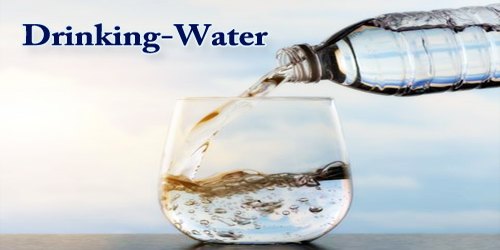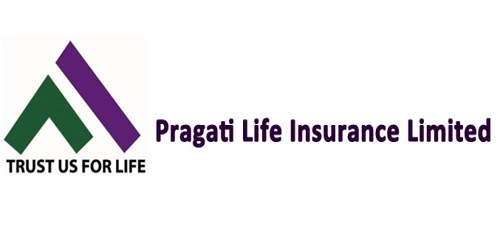“Drinking Water”, also known as ‘Potable Water’, simply means water that is safe to drink, and it is becoming scarcer in the world. Increasing use is stressing freshwater resources worldwide, and a seemingly endless list of contaminants can turn once potable water into a health hazard or simply make it unacceptable aesthetically. The water, which is fit for drinking because it is clean and transparent. The Ph level of this water is 7. There are no microorganisms present in this water. The amount of drinking water required to maintain good health varies, and depends on physical activity level, age, health-related issues, and environmental conditions.
Of the more than 2 billion people who lack potable water at home, 844 million don’t have even basic drinking water service, including 263 million who must travel 30 minutes per trip to collect water. About 159 million drink untreated surface water. Globally, by 2015, 89% of people had access to water from a source that is suitable for drinking called improved water sources. In Sub-Saharan Africa, access to potable water ranged from 40% to 80% of the population. Nearly 4.2 billion people worldwide had access to tap water, while another 2.4 billion had access to wells or public taps.
The World Health Organization (WHO) considers access to safe drinking water a basic human right. About 1 to 2 billion people lack safe drinking water, a problem that causes 30,000 deaths each week. More people die from unsafe water than from war, U.N. Secretary-General Ban Ki-Moon said in 2010. Unsafe drinking water is a major cause of diarrheal disease, which kills about 800,000 children under the age of 5 a year, usually in developing countries, but 90 countries are expected to fail to reach the goal of universal coverage by 2030.

Key Facts of Drinking Water –
- In 2017, 71% of the global population (5.3 billion people) used a safely managed drinking-water service that is, one located on-premises, available when needed, and free from contamination.
- 90% of the global population (6.8 billion people) used at least a basic service. Basic service is an improved drinking-water source within a round trip of 30 minutes to collect water.
- 785 million people lack even a basic drinking-water service, including 144 million people who are dependent on surface water.
- Globally, at least 2 billion people use a drinking water source contaminated with feces.
- Contaminated water can transmit diseases such as diarrhoea, cholera, dysentery, typhoid, and polio. Contaminated drinking water is estimated to cause 485 000 diarrhoeal deaths each year.
- By 2025, half of the world’s population will be living in water-stressed areas.
- In the least developed countries, 22% of health care facilities have no water service, 21% no sanitation service, and 22% no waste management service.
According to the World Health Organization (WHO), “access to safe drinking water is essential to health, a basic human right and a component of effective policy for health protection.”
The amount of drinking water required per day is variable. It depends on physical activity, age, health, and environmental conditions. In a temperate climate under normal conditions, adequate water intake is about 2.7 liters (95 imp fl oz; 91 US fl oz) for adult women and 3.7 liters (130 imp fl oz; 130 US fl oz) for adult men. Physical exercise and heat exposure cause loss of water and therefore may induce thirst and greater water intake. Physically active individuals in hot climates may have total daily water needs of 6 liters (210 imp fl oz; 200 US fl oz) or more. The European Food Safety Authority recommends 2.0 liters (70 imp fl oz; 68 US fl oz) per day for adult women and 2.5 liters (88 imp fl oz; 85 US fl oz) per day for adult men. Water makes up about 60% of the body weight in men and 55% of weight in women. A baby is composed of about 70% to 80% water while the elderly are composed of around 45%.
The World Health Organization (WHO) organizes potable water contamination as organic, inorganic, radiological, and microbiological, and includes measures of acceptability of taste, smell, and appearance.
- Organic contaminants are carbon-based chemicals, including solvents and pesticides, which are introduced through agricultural runoff or industrial discharge. They can be responsible for a range of severe health problems from cancer to endocrine function disruption.
- Radiological threats include radon, cesium, plutonium, and uranium. In North America, radon is the leading cause of lung cancer in nonsmokers and the leading environmental cause of cancer mortality overall.
- Inorganic pollutants, such as mineral acids, inorganic salts, metals, cyanides, and sulfates, persist in the environment. Heavy metals can cause neurological problems in humans, especially in the unborn and children, and also bio-accumulate in some foods. Arsenic can cause cancer, skin lesions, cardiovascular disease, diabetes, and cognitive impairment. Algal blooms from nutrients like phosphorus and nitrogen can also introduce cyanotoxins to drinking water as well.
- Waterborne pathogens including bacteria, viruses, protozoa, and parasites are usually introduced to water via feces and can cause a range of illness from mild gastroenteritis to potentially fatal diarrhea, dysentery, hepatitis, typhoid fever, cholera, and cryptosporidiosis. Millions are also infected with waterborne tropical diseases that include trachoma, the most common cause of preventable blindness.
Access to safe drinking water is indicated by safe water sources. These improved drinking water sources include household connection, public standpipe, borehole condition, protected dug well, protected spring, and rainwater collection. Sources that do not encourage improved drinking water to the same extent as previously mentioned include: unprotected wells, unprotected springs, rivers or ponds, vender-provided water, bottled water (consequential of limitations in quantity, not a quality of water), and tanker truck water. Access to sanitary water comes hand in hand with access to improved sanitation facilities for excreta, such as connection to the public sewer, connection to a septic system, or a pit latrine with a slab or water seal. Also treating drinking water are so-called “emerging contaminants” or “contaminants of emerging environmental concern,” which include pharmaceuticals introduced through sewage and runoff from livestock operations.

Demand for freshwater worldwide is projected to increase by 55% between 2000 and 2050, and recently, NASA scientists have determined that freshwater resources are being used faster than they are being replenished. Jay Famiglietti, a senior hydrologist at NASA, has warned, “The water table is dropping all over the world. There’s not an infinite supply of water.” Drinking or Potable water is fundamental to human life, and we can expect it to be a growing issue for the foreseeable future.
Information Sources:
















